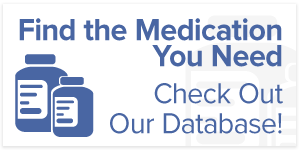Have you ever wondered how hospitals recover the costs that are incurred in the treatment of patients? The machinery they have to buy, the salaries of their employees, and much more?
The compensation that the hospitals, healthcare providers, and organizations receive for providing you with medical services is referred to as healthcare reimbursement.
Your insurance provider or a public payer may cover all or part of the cost of your healthcare. You could be accountable for a few of the costs based on your health care plan, and if you do not have healthcare coverage, you will be liable for reimbursing your hospitals and doctors for the entire cost of your health treatment.
Here are 4 methods through which hospitals are reimbursed.
1. Bundled Payments Method
Bundled payments reward healthcare providers for particular episodes of care. It covers a lot more ground in terms of care coordination than typical case-rate reimbursement. The CMS’ program Comprehensive Joint Replacement (CJR) is an example of a bundled payment that includes the inpatient stay as well as all connected providers. This strategy promotes better care coordination and can help avoid the use of services that are duplicated or medically unnecessary.
2. Fee for Service Method
This model has particular agreed prices for each treatment and/or service provided, but it has also integrated additional cost-control and care-management features throughout time. Specifies or comparative weight situations have been used by the providers to promote collaborative cost/care management for inpatient treatments. As a way of balancing the risk, providers frequently negotiate stop-loss provisions and loopholes for reducing costs of for costly items.
This method began with basic rate plans for specific procedures for outpatient care, but it has since expanded to include a wider range of categories within pre-defined outpatient payment classifications. Additional cost restrictions, such as the lesser-of-the-charge or reimbursement, multiple-procedure discount, observation or minimal stay conditions, bundling, and modifier logic, are frequently included in the negotiation process.
3. Shared Saving Method
This concept offers providers upside benefits and decreases the risk in order to improve care coordination and results within a defined patient population. As an upside reward, the providers may be offered a predetermined amount of net savings through a percentage. This strategy is built on establishing procedures and benchmarks for calculating shared savings.
4. Value-Based Reimbursement Method
Providers are rewarded under a fee-for-service structure coupled with efficiency and quality element in the modern value-based reimbursement model. There are extra incentives to assist achieve good results, not just the number of efforts, by attaching quality standard indicators to compensation.
These are some common methods how hospitals and healthcare providers get reimbursed when they provide treatment to patients that are insured. If you are insured, well and good, but if you’re not, you might want to enroll with The Rx Helper’s prescription assistance program. We provide uninsured or underinsured people affordable medication at subsidized rates, or even for free. Contact us now to know more.




